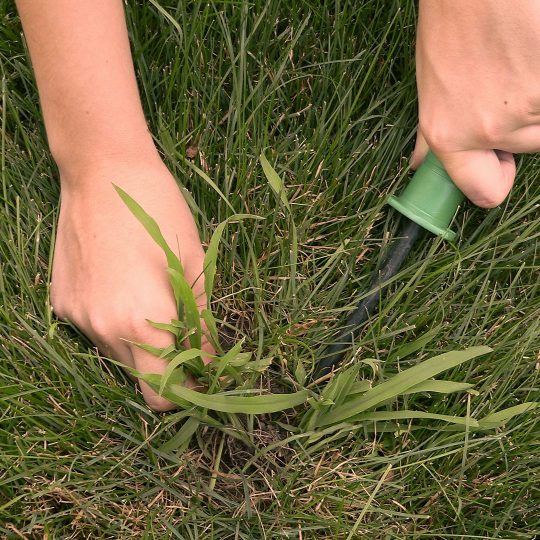Weed Spotlight: Crabgrass
Identification, Treatment, and Prevention
Posted
May 2, 2024

Sometimes sneaky weeds like to trick you into thinking it’s grass. This way it can go on thriving and spreading in your lawn. Don’t let it. Crabgrass is one of these weeds. It even has grass in its name to trick you. Here’s how to find it, get rid of it, and help make sure it doesn’t return.
What is Crabgrass
Crabgrass is a common and invasive annual weed that can quickly take over your lawn. It thrives in warm weather, so you’ll see it more often in the late spring and early summer. Left unchecked, crabgrass spreads rapidly through seed production across your lawn. You can tell it’s crabgrass because of how it spreads low to the ground with long grass-like blades that look like the legs of a crab. Even though its yellowish, light green color looks like grass, it has a coarser texture.
How to Treat Crabgrass
Like any weed, crabgrass treatment is more effective at the first signs. Here are some methods to try:
- Hand pulling is more effective with small infestations. Make sure to remove the entire plant, including the roots, to prevent regrowth.
- There are selective herbicides designed specifically for crabgrass that can treat larger infestations. These products target crabgrass while sparing healthy grass.
- Pre-emergent herbicides are more effective when applied in the early spring before crabgrass seeds germinate. These products create a barrier that prevents weed seeds from sprouting. But once you see signs of crabgrass, it’s too late for pre-emergents. It’s best to move on to the next step.
- Post-emergent herbicides are used to control crabgrass that has already germinated. These products are most effective when applied to young crabgrass plants. Once they’ve become established, it’s harder to treat.
You can help save yourself from having to treat crabgrass by following some preventative measures.
Preventing Crabgrass Weeds
One of the best ways to prevent any weed is to maintain a healthy lawn. How? Proper mowing, fertilization, and enough water can help your lawn overcome crabgrass.
- Keep your lawn mower set to a higher height to shade out crabgrass.
- Fertilizer should only be used when your lawn is lacking nutrients. Test your soil to see if there is an imbalance.
- There is such a thing as too much and too little water. If you’re unsure, check the soil. If it’s still moist a few inches below ground-level it should be fine.
- Fill in bare grass spots with weed seed and overseed to help revive a thinning lawn.
- Minimize soil disturbance by avoiding excessive foot traffic and using mulch in garden beds.
If you’ve tried treatment and prevention methods and are still seeing signs of crabgrass, contact the lawn care specialists at Cardinal Lawns to help deal with this persistent and unsightly weed.

Download Your FREE Lawn Weed Guide
Before weeds take over your yard this season, learn to identify and prevent them in the first place. Keep your lawn looking great all year!